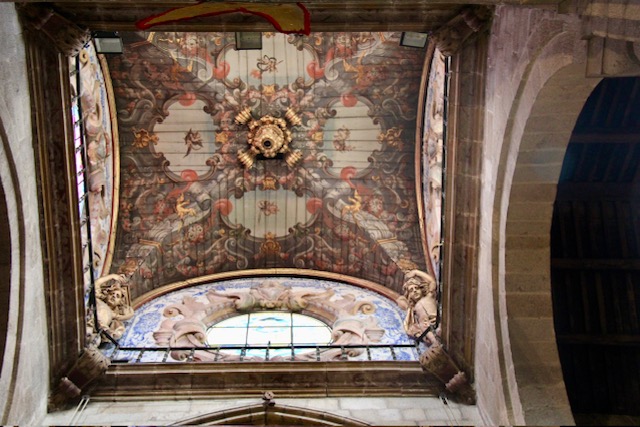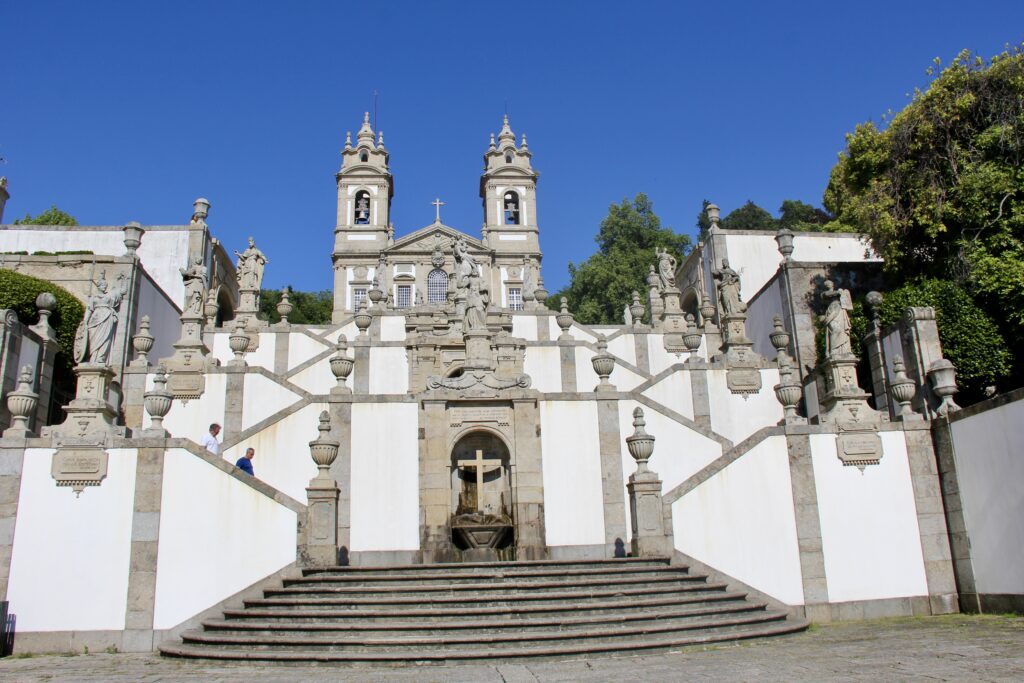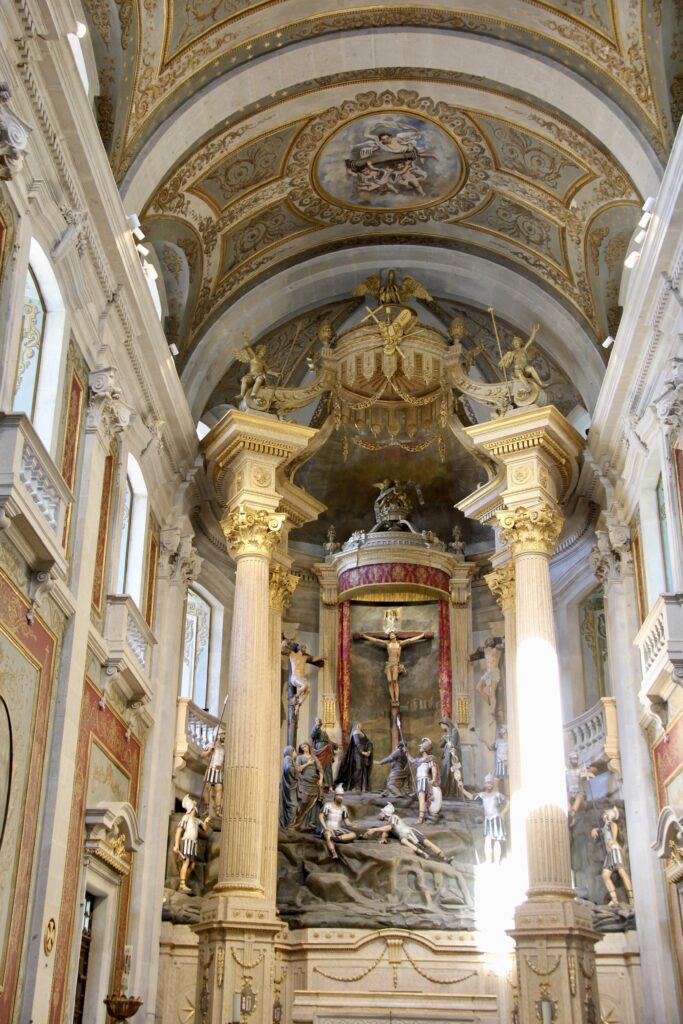Braga is just 30-40 minutes drive from Guimaraes. After we finished exploring Guimaraes, we drove to Braga and parked our car in a parking lot near near Praça Da República. Most city tours begin here with many streets radiating off this square.
Praça Da República (Republic Square) – In the middle of historic Braga, this plaza is known locally as “Arcada”. The name refers to the 18th-century arcaded building on the west side of the square. The square itself was plotted in the 1800s and is long and grand, and walled by tall apartment buildings. You have the tourist office, a beautiful fountain, and restaurants. There is also a church in the center (Igreja da Lapa), built between 1751-1757, with the attached bell tower.



Avenida da Liberdade – Beautiful avenue to have a relaxing walk. Well kept flower beds and nice looking buildings all around the path. This avenue leads to the main square Praça Da República (see above)

Basilica dos Congregados – This 18th century baroque cathedral sits on Praça da República. It is free to enter and worth a quick peek.


Garden of Santa Barbara – This lovely garden is next to Braga’s medieval palace and bounded by the palace’s beautiful north walls, which is topped by typical pointed merlons. It is a free to visit and you can stroll through the well manicured garden in just a few minutes.

Cathedral of Braga (Sé de Braga) – This Roman Catholic church is one of the most important buildings in Portugal and the seat of the Archdiocese of Braga and Primate Archbishop of Portugal and Spain. The cathedral has been classified as National Monument since 1910. The interior of the cathedral, especially the organ is a must-see. As you walk down the nave, look up to see the organ.




Arco da Porta Nova (Arch of the New Gate) – This ornamental gate dates back to the early 1500s when Braga was encircled by defensive walls and the gate provided the western entrance to one of the main thoroughfares. In the 18th century, the gate was renovated into a triumphal arch that features a Baroque design on the western façade, while the east-facing side is Neoclassical. This is a great place to stop and take a picture.

Castle of Braga was once the medieval walls and fortifications that surrounded the city of Braga. All that remains now is the main keep tower. Called Torre de Menagem, this medieval tower sits in the city center and you can see the top of the tower from many places in the city including Praça Da República.
When we visited, the tower was closed. If open, you would probably get a great view of Braga from the top.

Praça do Municipio (City Square) – As you stroll through the city you will come across this beautiful square with a pelican fountain and a stunning building which used to be the Archbishop’s Palace and is now the public library.

Largo do Paco – This is another public square in the historic centre of Braga. It is part of the Episcopal Palace and of the local Minho University. An 18th century fountain, Chafariz do Castelo (Fountain of the Castles), stands in the center of the square. The buildings surrounding this are part of the Episcopal Palace belonging to the Archbishop.

Bom Jesus do Monte – This neoclassical church completed in 1834 is the city’s most visited tourist attraction and sits high on a hilltop to the east. This sanctuary is a pilgrimage site and has been attracting religious devotees since the 14th century. You can either take a funicular or walk up a stair way to visit this church. We walked up the stairway, which rises more than 100 m and has 640 steps. These stairs zigzag up the slope and are adorned with lovely Baroque sculpture. The staircase is built of granite and interconnected by a series of chapels showing the 14 Stations of the Cross. The interior of this church is as spectacular as its outside and you will be rewarded with a sweeping view of Braga from the top.







Other sites around Braga which we did not have time to visit :
- Biscainhos Museum – This house museum gives you a look into the lives of Portugal’s nobility. You’ll see some magnificent azulejos, collections of glassware, furniture, jewelry, ceramics and musical instruments.
- Raio Palace – In the centre of Braga, this palace from the 1750s will stop you in your tracks as its walls are clad with blue azulejos, which contrast with the graceful granite carvings on the doorways and window frames. The palace is next to Braga’s hospital and inside there’s a free museum with some old medical artefacts as well as information about the building and its recent restoration.
- Chapel of São Frutuoso – This Pre-Romanesque chapel was founded by the Visigoths in the 7th century. Damaged during the Islamic period, it was repaired in the 9th and 10th centuries.
- Monastery of São Martinho de Tibães – This 16th century Benedictine monastery that has some rich decoration. you can see the riches that this church generated in the opulent furnishings in the church and cloister.
- Sanctuary of Our Lady of Sameiro – Just south of Bom Jesus do Monte is another hilltop sanctuary, set even higher at 566 m above sea level. Although another of Portugal’s most frequented pilgrimage sites, it is less crowded and quite compared to its neighbor to the north. It is a newer church built in 1860s, and you get a fantastic view all around.